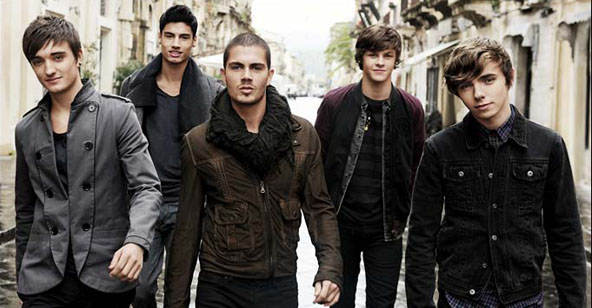The very start of boy bands came from late 19th century barbershop quartets. These pinstripe suited men soon gave way to the swing bands or big bands of the roaring twenties. While barbershop quartets would often choreograph their own dances to their harmonies, big bands would just be simple musical ensembles with usually no vocal harmony or dancing. As decades went on, the birth of the phenomenon that is rock and roll came to be. And with rock came Elvis Presley, Tommy Steele, and Little Richard. While these musical icons flourished in the decade of the 40s, the earliest predecessors of boy bands were coming to life. One of the earliest, being The Osmonds, a family band consisting of five brothers. Beginning as a simple barbershop quartet, these brothers soon became more than just a fad. They quickly evolved from teen heartthrobs into full blown pop stars by the mid 1970s.
However, despite The Osmonds’ success, they never matched up to the band that was quickly becoming all the rage in the 1960s: The Beatles. Considered as the best rock and roll band of all time, The Beatles is the best selling band of all time. The band consisted of young men from Liverpool, England with distinctive personalities. Known for their meaningful lyrics and charmingly boyish good looks, The Beatles soon became a phenomenon not only inEnglandbut also around the world. However, their run as a band lasted shortly. In the late 1960s, the band began to break up. However, each member went on to become successful solo artists. Although The Beatles were only active for a decade, they soon inspired many to follow in their footsteps.
Although the term boy band wasn’t coined until the 1990s, the earliest modern boy band were New Kids on the Block in 1984. While New Kids on the Block reigned stateside, Europe soon began to form their own powerhouse pop groups. The first in 1990 with Nigel Martin-Smith’s Take That which produced renowned singers, Robbie Williams and Gary Barlow. In 1993, inspired by Take That and New Kids on the Block, Louis Walsh of X-Factor fame, decided to create an “Irish Take That,” thereby,forming Boyzone. After these initial bands,Europebegan to pump out more successful bands such as Westlife and McFly.
Over inAmerica, N’Sync and the Backstreet Boys were created, generating millions of fangirls. More bands such as Hanson, 98 Degrees and Boyz II Men dominated the charts in theUnited States. However, America and Europe weren’t the only ones experiencing the wave of boy bands. Latin band, Menudo was formed in the 1970s. It soon became one of the most iconic musical groups in the Latin world. In Asia, a new sort of boy band was being produced in Korea. The start of boy bands in Korea started in the mid 1990s with Seo Taji and the Boys. The most influential groups came to be Shinwha, DBSK, and Super Junior, all strictly pop groups, and all manufactured by the same company. In Japan, the same phenomenon was happening. While K-pop reigned in Korea, J-pop took over inJapan. Although more rock and roll than pop, Japanese bands such as Zard, Wands, and Tube soon had millions of fans clamoring for new songs.
Now, the most recent boy bands are British. While boy bands seem to be a fad that changes over time, it seems the bands One Direction and The Wanted have captivated the hearts and minds of fangirls all over the world. According to Celeste Perez, sophomore, One Direction is so popular because, “They’re young and they make good music.” Agreeing with that sentiment is Erin Tait, freshman, who says, “I love them!”
Well, whether or not you’re a fan of boy bands, it seems as if they won’t be going anywhere soon.
